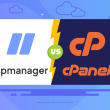E-commerce is a dynamic sphere, and output means keeping the competitive edge. A very important agent of this is proper eCommerce website optimization. By optimizing your online store, you are refining various elements so that not only do people come, but identifiable customers will start flowing in. eCommerce website optimization cannot be stressed enough, as it directly affects your business’s bottom line.
In this article, we will discuss what optimization of an e-commerce website is, the most important tactics and metrics involved, and 10 actionable tips for getting better performance out of your online store. Moreover, we will look at what tools can support this process. Let’s dive in.
What is eCommerce Website Optimization?
eCommerce website optimization includes enhancements in performance, usability, and overall experience systematically and methodically for an online store. Creating an easy, agreeable user shopping experience will automatically lead to higher conversion rates, improved customer loyalty, and increased sales. This will be an assortment of technical, design, and content-related strategies that help enhance the website’s effectiveness.
From streamlining navigation to ensuring fast load times and optimizing for mobile devices, every element of your e-commerce website should be honed to your target audience’s specific needs and expectations. Search engine optimization also determines how organic visitors will reach your website, which is important for optimization.
Tactics to Consider
There are several important tactics in eCommerce website optimization to ensure your expectations are met. The areas critical to focus on include the following four:
User Experience (UX)
User experience forms the foundation of any successful e-commerce website. A good UX design should let your customers easily move around the site, locate products, and finish purchasing without any fuss. The major factors to focus on are intuitive navigation, responsible design, and streamlined checkout processes.
Search Engine Optimization
SEO remains the most important aspect of bringing in organic traffic to your e-commerce site. Optimized search engines require the use of relevant keywords to develop rich content, so your site must also be technically correct. This means page load time, mobile friendliness, and proper indexing of your product pages.Balancing SEO and user experience is key to making your website appealing to visitors and effectively turning them into customers. Creating great blog content is one of the best ways to do this. Blogs focusing on long-tail keywords and providing helpful information can help attract the right audience and guide them through their buying journey.
That’s where DropinBlog can make things easier. Instead of struggling to set up a blog from scratch or dealing with a complex CMS, DropinBlog lets you add an SEO-friendly blog directly to your e-commerce site. It’s lightweight, easy to use, and won’t slow down your site. With DropinBlog, you can grow your business with high-quality content while keeping your site fast and well-organized. It’s a simple yet powerful way to boost your SEO and connect with your audience.
Customer Acquisition and Retention
Though acquiring new customers is necessary, their retention becomes equally important. Some of the best customer acquisition strategies include targeted advertisements, social media usage, and email mailing. Retention efforts have to concentrate on personalized experiences and loyalty programs and extend to offering excellent customer service.
Conversion Rate Optimization
CRO fundamentally encompasses studying user behavior on your site through data-driven enhancements to raise the percentage of visitors taking a desired action and completing a purchase. This may include A/B testing, product page optimization, and checkout process refining.
Metrics to Consider
Measuring the success of an eCommerce website optimization is often crucial. Key metrics to track can include:
- Conversion Rate: The percentage of visitors who complete an intended action or transaction.
- Customer Acquisition Cost (CAC): This refers to acquiring a new customer through marketing and sales efforts.
- Average Order Value: The amount of money spent on average by a customer in one transaction.
- Customer Lifetime Value (LTV): Refers to the total revenue expected of a customer through his lifetime.
- Bounce Rate: The bounce rate is the percentage of users who visit your site and then leave after only viewing one page.
10 Tips For Optimizing eCommerce Websites

Now that we have covered the basics, let’s explore some actionable tips for optimizing your e-commerce website.
Optimize for Mobile Devices
As more people use smartphones to access online shopping, your website’s mobile-friendliness is not up for discussion. Apply responsive design, reduce the size of images for mobile access, and make the checkout process less heavy-handed on smaller screens.
Improve Site Speed
Slow websites simply chase customers away, period. Use tools like Google PageSpeed Insights to check and improve your website size. Compress your images, use website caching, and look into getting a content delivery network to speed up your site.
Enhance Product Descriptions
Good quality and detailed descriptions will highly affect your conversions. Captivating, informative, and including relevant keyword descriptions can give answers to potential customers’ questions or doubts.
Use High-Quality Images and Videos
Visual content is really important in e-commerce. Use high-resolution images and videos showing different angles of your merchandise. Consider allowing end-users to zoom in on images and include video demonstrations.
Simplify the Checkout Process
Furthermore, a complicated checkout contributes to cart abandonment. Keeping the steps simple, reducing form fields to a minimum, and giving customers choices of ways to pay will go a long way. Consider turning on guest checkout to reduce friction even further.
Supercharge Your E-Commerce Website!
Are you looking to optimize your e-commerce site for maximum performance and sales? UltaHost’s e-commerce hosting solutions are designed to provide you with the speed, security, and reliability your online store needs.
Implement Customer Reviews and Testimonials
Customer reviews and testimonials build trust and can lead to buying decisions. Encourage your customers to leave reviews that you then showcase highly visibly on product pages.
Personalize the Shopping Experience
Another possible reason is that personalization can further enhance customer engagement and conversions. Use data to offer personalized product recommendations, run tailored e-mail campaigns with premium email hosting, and custom discount offers based on browsing and purchase history.
Optimize for Voice Search
As voice-activated devices continue to grow, optimizing your e-commerce website for voice search gives you an advantage over others. Employ natural language keywords and design your website so that users can get quick answers to voice queries.
Showcase social proof through customer testimonials, social mentions, and user-generated content to help drive a lot of credibility and sales. Instead, display social proof on product pages and throughout your site to win over the trust of potential customers. Reliable social network hosting can greatly help you leverage social proof.
Utilize Retargeting Ads
Retargeting ads prove to be among the best ways to convert visitors who did not complete the purchase. Displaying targeted ads to users who visited your site earlier and reminding them about the products they viewed will only encourage revisiting and completion of the purchase.
Tools for E-Commerce Optimization
For an inefficient eCommerce optimization of your website, you would first have to use the right tools that would help with this in mind. Below are some categories of tools that can be used:
E-commerce Platforms
Picking the proper electronic commerce platform is actually one of the bases for an online store’s success. E-commerce giants like Shopify, WooCommerce and Magento provide various features and plugins for optimization, be it SEO tools, mobile optimization, and integrated analytics.
Website Analytics Tools
Website analytics tools like Adobe and Google Analytics provide insight into your website’s performance. They prove useful for monitoring key metrics, recognizing bottlenecks, and measuring the effectiveness of optimization strategies.For more advanced multi-channel reporting, consider trying out specialized dashboards like Tapclicks. [By centralizing your data in one platform, you’ll see a clearer picture of how your eCommerce optimizations are performing].
Heatmap Tools
Other tools, such as Hotjar or Crazy Egg, visually represent how users interact with your website. With this heatmap analysis, you can pinpoint areas that require enhancements on your site- where users drop off or which elements they click the most.
A/B Testing Tools
A/B testing tools such as Optimizely and VWO will let you run tests across variations of your website to realize which one performs better. This will be key in driving data-influenced design, content, and functionality decisions.
SEO Tools
SEO tools like Ahrefs and SEMrush will provide you with the frontline resources needed to optimize your website against search engines. Such tools offer keyword research, backlink analysis, and site audits that will ensure your website ranks high in SERPs.
Conclusion
E-commerce website optimization is included in the essentials of creating an online store. By paying attention to user experience, SEO, acquiring and retaining customers, and conversion rate optimization, you can create a website that will make people come not only to visit it but also turn them into loyal customers. Remember also to trace key metrics that measure the effectiveness of your efforts and use proper tools to support your optimization strategies. By following these strategies, you will be well on your way to achieving e-commerce success.
Reliable SEO hosting is essential for a truly optimized e-commerce website. UltaHost offers SEO-focused hosting solutions that boost your site’s visibility and performance, helping you rank higher and reach more customers.
FAQ
What is e-commerce website optimization?
It’s the process of enhancing your online store to improve user experience, boost conversions, and increase sales.
Why is site speed important?
Fast site speed keeps visitors engaged, reduces bounce rates, and improves conversions.
How does SEO impact my e-commerce site?
SEO boosts your site’s visibility on search engines, driving more organic traffic and increasing sales.
What key metrics should I track?
Track conversion rate, customer acquisition cost (CAC), average order value (AOV), and customer lifetime value (LTV).
How does personalization help my site?
Personalization offers tailored experiences that boost customer satisfaction and conversions.
What role do customer reviews play?
Reviews build trust, influence buying decisions, and can increase sales through social proof.
Why use A/B testing on my e-commerce site?
A/B testing helps you find the best-performing version of your site to improve user experience and conversions.













